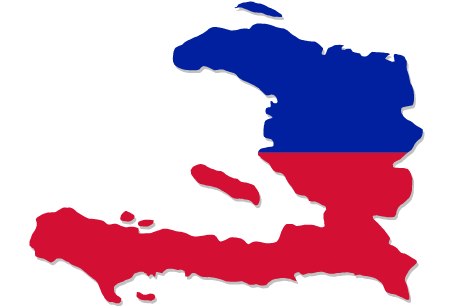Haitian Creole

Language History
Haitian Creole is a French-based language that formed in the 17th and 18th centuries between French colonists and African slaves in Haiti. It became recognized as Haiti’s official language (along with French) in 1961. At first, Haitian Creole was not a written language, but merely a language used for communication. It wasn’t until the 1980s when the first official and standardized Haitian orthography was created.
Haitian Creole is spoken by approximately 12 million people around the world.
Where is Haitian Creole Spoken?
Haitian Creole is spoken in Haiti by around 7 million people; however, it is also spoken in the Bahamas, Canada, Cayman Islands, Dominican Republic, France, French Guiana, Guadeloupe, Puerto Rico, and the U.S. (Ethnologue).

Fact
Haitian Creole is often mistakenly thought of as a French dialect or “broken French”.
Did you Know?
The main differences between Haitian Creole and French lie in their grammar. Alsintl.com reports that “the conjugation of verbs, pluralization of nouns and other linguistic nuances make Haitian Creole its own separate language that needs to be translated as such.”
Haitian Dialects
• Northern dialect – spoken in Cap-Haitien
• Central dialect – spoken in the metropolitan area of Port-au-Prince
• Southern dialect – spoken in Cayes
4 Easy Phrases in Tagalog!
Population vs. Internet Penetration
Haiti Population:
11,402,528
Internet Users:
3,650,555
Penetration:
32.0%
As of 2020. Source:
www.internetworldstats.com
Fact!
Most of Haitian Creole vocabulary is derived from French, however it has also borrowed words from English, Spanish, Wolof, Fon, and Éwé. For example, diri derives from the French word du riz (rice), and sapat comes from the Spanish word zapato (shoe).
Haitian Creole Translation Tips
• To signify tense, a system of markers which come before the verb are used.
• There is no grammatical gender in the Haitian Creole language.
• Haitian Creole uses the subject-verb-object sentence structure.






